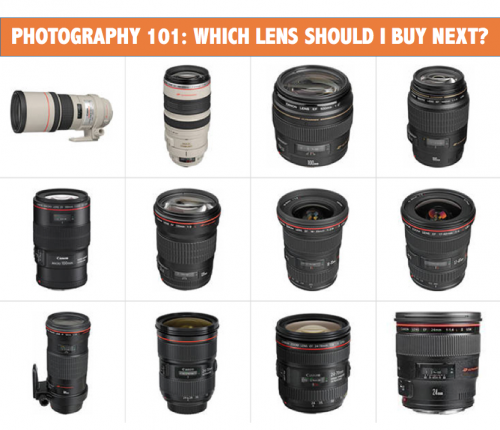Your Next Lens | Photography 101 for New DSLR Owners
In our continuing series of technical information for new photographers, we’re going to look at what is often the next step for new DSLR owners. Your next lens!
Let’s assume that your new DSLR came with a “kit lens”. This is just about all the time a “zoom” lens, which means that the focal length isn’t fixed at one setting, it can adjust (“zoom”) in its view (think of the view as how “strong” or “telescopic” of a view you see; or, at the other end of the spectrum, how “wide” of an angle the lens sees. A typical kit lens is something like an 18-55mm… which, with the crop factor considered (see Photography 101 for New DSLR Owners to learn more about this important consideration) covers from a fairly wide starting point (about 27mm equivalent on a full-frame camera) to a slight telephoto range (about 85mm equivalent on a full-frame camera) which is a great focal length for portraits.
One of the first observations made by those new to the photography field is that buying lenses seems to be much more expensive than the initial kit investment. Many first time DSLR owners bought their camera body, with maybe even two lenses, some accessories, and a bag for it all for well under $1,000; maybe even as low as $450. How, then, is it that some accessory lenses alone will cost as much as the entire kit…or even cost $2,000 or more? It’s all about the quality of the glass, and the “speed” of the lens. Whereas the kit lenses that came with the camera have a maximum aperture (which is to say to ability of the lens to pass light through the lens instead of “absorbing” it) of f/3.5 at their widest, diminishing to f/5.6 at the telephoto end, the after market lenses are going to be much “faster” with very light-efficient maximum apertures of f/2.8 for zooms (that stays fixed at f/2.8 all throughout its zoom range) and f/1.8, f/1.4, and even f/1.2 for fixed focal length lenses, which are often called “prime” lenses. This, plus the rugged professional build, weather-sealing, and very sharp optics all contribute to their cost. Brand name lenses that match the manufacture of the camera typically cost the most, and are typically also the sharpest and most rugged. There are exceptions, of course, as some after-market manufacturers like Sigma have premium lines in addition to their consumer-oriented basic lines. Zoom lenses are far more complicated and will nearly always cost more than a fixed-focal length variant. And yes, these expensive lenses are going to be far superior in all their attributes to the kit lens that came with your camera, at least if you’re a “serious enthusiast”. For snapshots of the kiddo’s birthday party, that kit lens is going to be just fine.
Back to the basics: Your next lens!
If you photograph landscapes or interiors, I’d suggest something in the wide angle category. On our full-frame cameras, we love the very-wide views at 24mm and perhaps even more so, the wide sweeping vistas we get at 16mm with our 16-35mm zoom.
If you like to photograph nature, wildlife, or sports, I’d suggest a telephoto lens, most typically in a zoom configuration. Something like a 70-300mm is popular. Remember that with that crop factor a 300mm is actually going to look like a 450mm through your viewfinder…and that is a very strong lens! Perfect for air shows, wildlife and birds, for sure!
There are also “tele-converters” available that insert between your lens and the camera to increase the focal length of the lens (including zoom lenses) by a factor such as 1.4x or even 2.0x. Nothing comes for free, though, and these converters cost some amount of light loss; one stop for the 1.4 and two stops for the 2.0. But if power is your need (think not just an eagle visible in the shot but rather the whole frame filled with the eagle!) this is a great way to go versus buying what would amount to a very, very expensive lens of similar direct focal length capability. You know those full moon photos where the moon is eerily huge? This is the way to do that..(yes, with a tripod).
If outdoor portraits are your thing, the equivalent of a 135mm lens is popular. Indoor portrait photographers often rely on their 85mm lenses.
If you like close-ups, such as of flowers and insects, go for a macro lens.
Try before you buy! There are many camera shops that rent lenses (and gear), as well as online sources such as LensPro To Go.
Have fun varying your look on the world with a new lens.
